Improving Flexibility

Flexibility is the range of motion of your joints. You can improve your flexibility by stretching 2-3 days a week at a low intensity until you feel tension, but not discomfort.

Types of Flexibility
Static flexibility is the most common type of flexibility. The range of motion that can be achieved through a slow, controlled stretch. Slowly stretch a muscle to the point of tension and hold. After a while, there is a gradual loss of tension and muscle lengthening. It’s important to combine static stretching with a warm-up to decrease the risk of injury.
Dynamic flexibility involves swinging and short quick movements. The range of motion is achieved by quickly moving a limb to its limits. This form of stretching is useful in preparation for athletic activities.
Two other types of stretching are active and passive. For active stretching, you use your muscle forces to stretch yourself—these stretches are often used in yoga exercises. Passive stretching occurs when another part of your body or someone assists you in holding a stretch. Examples of this would be holding your leg up in a stretch or having another person assist in holding the stretch.
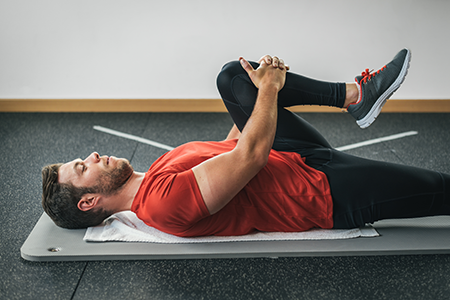
Benefits of Flexibility
There are many benefits associated with being flexible. Stretching independently as well as before and after exercise can lead to these benefits:
- Decreased aches and pains
- Enhanced ability to move freely and easily
- Reduced muscle soreness after exercise
- Reversal of age-related flexibility declines
- Possible decreased risk of injury
- Improved posture and appearance
- Enhanced athletic performance
It’s important to know that if you do not perform stretches correctly, it can cause injury. Also, when stretching, stretch to the point of tightness, not discomfort. Stretching to discomfort may also cause injury to your joints and muscles.
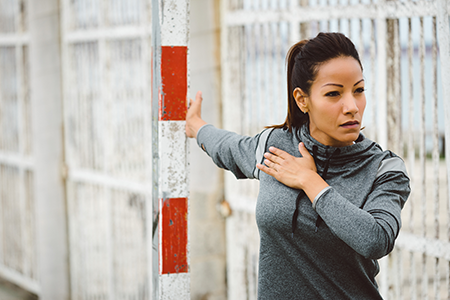
Guidelines of Flexibility Development
You should perform your stretches 2-3 days a week to develop more flexibility. When performing your stretches, make sure to hold the stretch for 10-30 seconds four times for each muscle group. Everyone has different body types, progress at your own pace by stretching to the point of tension, not discomfort.
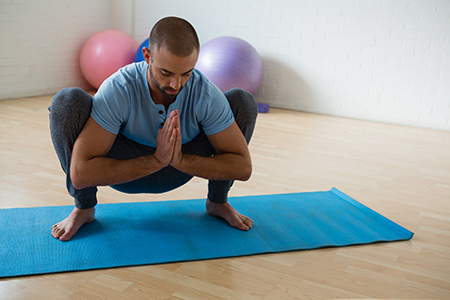
Principles of Flexibility Development
The goal of stretching is to create a semi-permanent lengthening of the tissues. Flexibility changes are reversible, so make sure you practice your stretches 2-3 days a week.
Be specific with your stretches to work all joint angles. It’s normal to experience imbalance when stretching. When you feel this imbalance, spend more time stretching those areas.
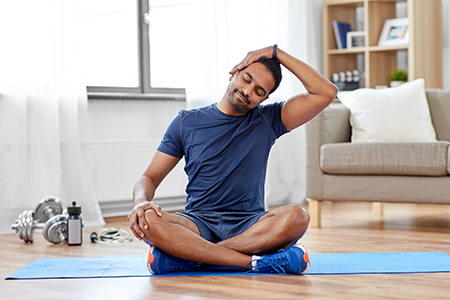
Factors Affecting Flexibility
As we age, we become less flexible due to decreasing activity levels. Below are other factors that affect flexibility.
- Joint Structure
- Soft Tissue
- Inactivity
- Muscle Temperature
- Genetics
- Obesity
- Injury and Scar Tissue
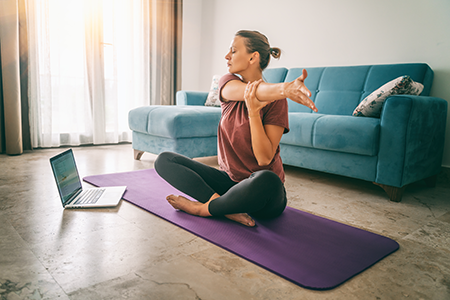
Common Stretches
Chest Stretch
With your arms out to your side like a T, point your thumbs up or back, pull your arms back as far as you can comfortably. You can do this seated or standing. You can also do this into a doorway to help assist in getting a deeper stretch.
Tricep Stretch
Place your left elbow in your right hand. Place your left arm overhead, with your palm on the center of your back. Try to reach your hand as low on the spine as you comfortably can. Repeat on the opposite arm. You can do this seated or standing. You can also do this against a wall for a deeper stretch.
Quad Stretch
Stand tall with your back straight using (chair, table, or wall) to your side for balance. Bring your right heel towards your backside and grab it with your right hand, keeping the knee pointing straight down. Repeat on the opposite side. You can also do this on the floor lying on the opposite side of the leg you are stretching.
Hamstring Stretch
Feet shoulder-width apart and knees slightly bent, slowly bend at the waist keeping your back straight, reaching down with your arms. This stretch can be done standing or seated on the floor.
Inner Thigh Stretch
Stand tall with your back straight, feet wider than the hips. Slowly squat down, placing your arms inside your legs and on the ground for support. Lightly push your knees out using your elbows until you feel a stretch in your inner thighs.
Keep your back as straight as possible. Don’t allow your knees to move past your toes (if that happens, take feet out wider)
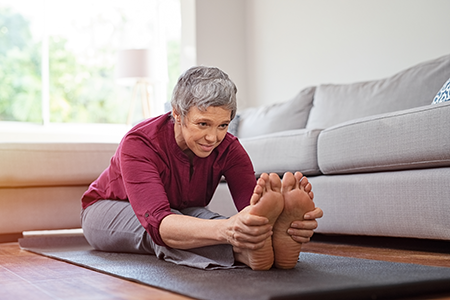
Download the Free Resource
Access a printer-friendly version of the resource to reference later.